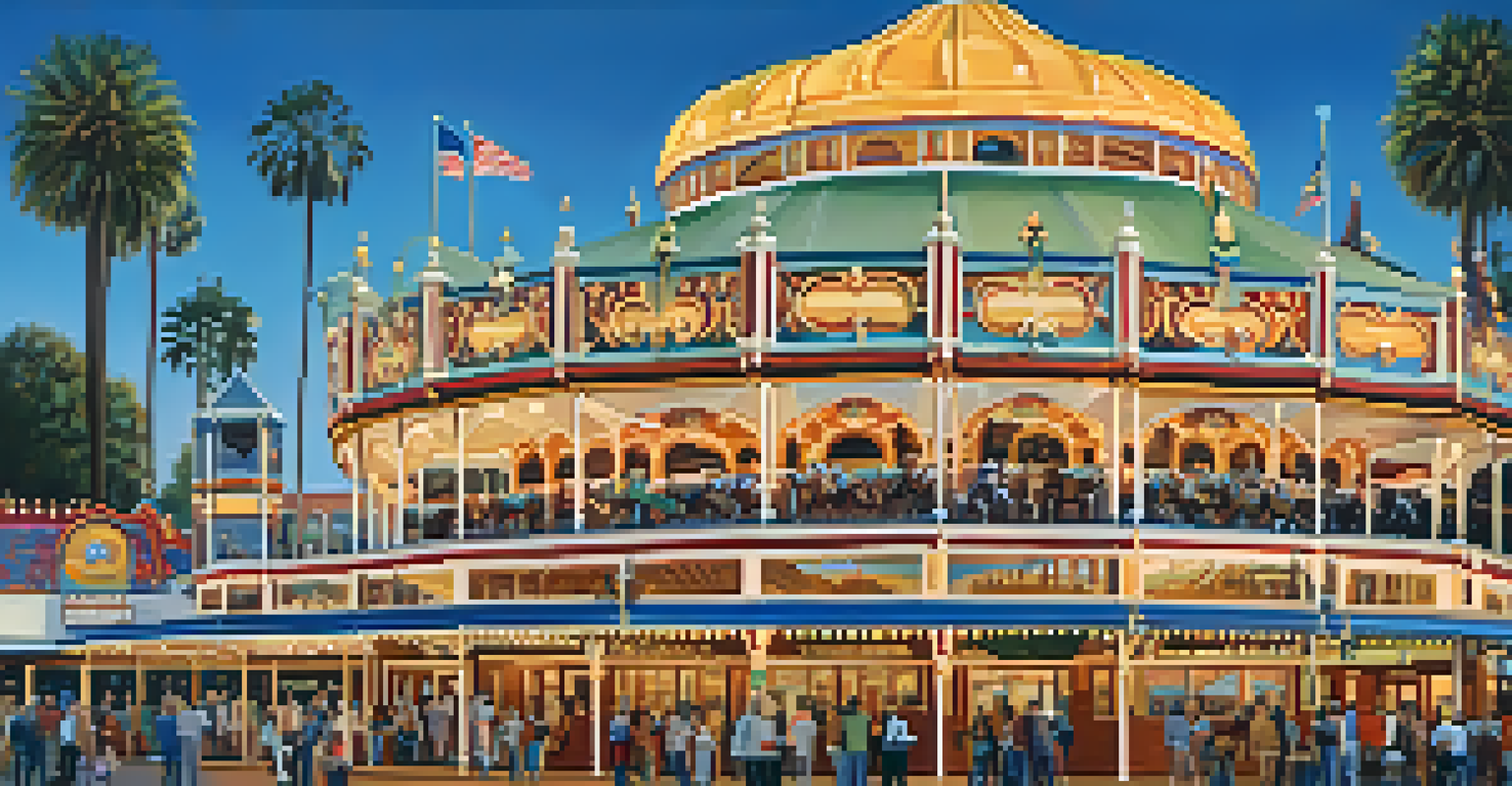The Importance of Historic Preservation in Santa Monica Today

Understanding Historic Preservation and Its Impact
Historic preservation is the practice of protecting and maintaining buildings, sites, and structures of historical significance. In Santa Monica, this practice plays a crucial role in maintaining the city's unique character and cultural heritage. By preserving these sites, we ensure that future generations can appreciate and learn from the past.
Preservation is a form of optimism; it's a way of saying that we care about the past and believe in the future.
Moreover, historic preservation isn't just about keeping old buildings standing; it's about fostering a sense of community identity. For residents and visitors alike, these historic sites serve as tangible connections to Santa Monica's rich history and storytelling. This sense of place can increase community pride and cohesion.
Additionally, preserving historic sites can have economic benefits. Tourists are often drawn to cities with rich histories and well-maintained landmarks, contributing to local businesses and creating jobs. Thus, historic preservation is not just an aesthetic endeavor; it has real implications for the local economy.
The Historical Significance of Santa Monica
Santa Monica boasts a diverse history that spans from its Native American roots to its development as a bustling beach town. Each era has left its mark, with iconic structures like the Santa Monica Pier and the original Muscle Beach reflecting the city’s evolution. These landmarks tell the stories of the people and events that shaped the community.

The city has also been a backdrop for various cultural movements and historical events, making it a living museum of sorts. For instance, the iconic Route 66 ends at Santa Monica, symbolizing America's westward expansion and the ever-changing landscape of travel and leisure. Preserving these connections helps residents and visitors understand the broader narrative of American history.
Preservation Enhances Community Identity
Historic preservation fosters a sense of community identity by connecting residents and visitors to Santa Monica's rich history.
As Santa Monica continues to grow and modernize, it’s essential to recognize the historical significance of these sites. They are not just relics of the past; they offer valuable lessons and insights that can guide the city’s development sustainably and thoughtfully.
Challenges Facing Historic Preservation in Santa Monica
Despite its importance, historic preservation in Santa Monica faces several challenges. Rapid urban development and rising property values can often put pressure on older buildings, making them targets for demolition. This tension between progress and preservation can create a sense of urgency among community members.
The preservation of historic places is a testament to our shared history and a reminder of who we are and where we come from.
Additionally, there can be a lack of awareness or understanding of the value of these historic sites among new residents and developers. Without this appreciation, the push for modernization may overshadow the need to preserve the city’s unique history. Education and outreach efforts are vital to bridging this gap.
Furthermore, funding for preservation projects can be limited. Many historic buildings require significant investment for restoration and maintenance. This financial hurdle can deter preservation efforts, leaving some historical sites vulnerable to neglect or demolition.
Community Involvement in Preservation Efforts
Community involvement is essential for successful historic preservation. Local residents often have a deep understanding and appreciation of their neighborhood's history, making their voices invaluable in preservation discussions. Grassroots movements can mobilize support for specific projects, ensuring that local perspectives are heard.
Organizations like the Santa Monica Conservancy actively engage the community in preservation efforts, educating residents about the importance of their local heritage. Through workshops, tours, and volunteer opportunities, these organizations foster a sense of ownership and responsibility towards preserving the city's historical assets.
Economic Benefits of Preservation
Maintaining historic sites can attract tourists, which supports local businesses and creates jobs, benefiting the economy.
Moreover, collaboration between community members, local government, and non-profits can lead to innovative solutions for preservation challenges. By working together, stakeholders can create a shared vision for Santa Monica that honors its past while embracing the future.
The Role of Local Government in Preservation
Local government plays a pivotal role in historic preservation through policies, regulations, and incentives. Santa Monica has implemented various preservation ordinances aimed at protecting its historic resources. These measures help ensure that significant buildings and sites are evaluated before any alterations or demolitions take place.
Furthermore, government support can extend to financial incentives for property owners who wish to restore their historic buildings. Tax credits, grants, and low-interest loans can make preservation more feasible for many. Such initiatives not only protect the city's heritage but also encourage responsible development.
In addition to regulation and incentives, local government can facilitate community engagement in preservation efforts. By hosting public meetings and encouraging input on preservation policies, officials can create a more inclusive approach that reflects the desires and needs of the community.
Case Studies: Successful Preservation Projects
Several successful preservation projects in Santa Monica highlight the benefits of historic preservation. One notable example is the restoration of the Santa Monica Looff Hippodrome, a historic carousel building. After years of neglect, this iconic structure was revitalized, serving as a beloved attraction for families and a symbol of the city’s commitment to preserving its history.
Another example is the preservation of the Annenberg Community Beach House, which originally served as a wealthy estate in the 1920s. Now, it functions as a public beach facility while celebrating its historical significance. Such projects demonstrate how preservation can breathe new life into old structures, making them relevant and accessible to today's residents.
Community Involvement is Crucial
Active participation from local residents and organizations is essential for successful historic preservation efforts in Santa Monica.
These case studies serve as inspiration for ongoing and future preservation efforts in Santa Monica. They showcase that with vision, collaboration, and community support, it is possible to honor the past while adapting to modern needs.
Looking Ahead: The Future of Historic Preservation
As Santa Monica continues to evolve, the future of historic preservation remains bright, albeit challenging. With growing awareness of the importance of preserving history, there’s potential for innovative approaches that integrate preservation with modern development. This balance can lead to sustainable growth that respects the city’s historical identity.
The involvement of younger generations in preservation efforts is crucial. As they become more engaged, they can advocate for the importance of these historic sites, ensuring that preservation remains a priority. Educational programs in schools can also instill an appreciation for local history in young minds.

Ultimately, the future of historic preservation in Santa Monica lies in the hands of its community members. By fostering a collective commitment to preserving the past while embracing the future, Santa Monica can remain a vibrant, historic, and culturally rich city for generations to come.